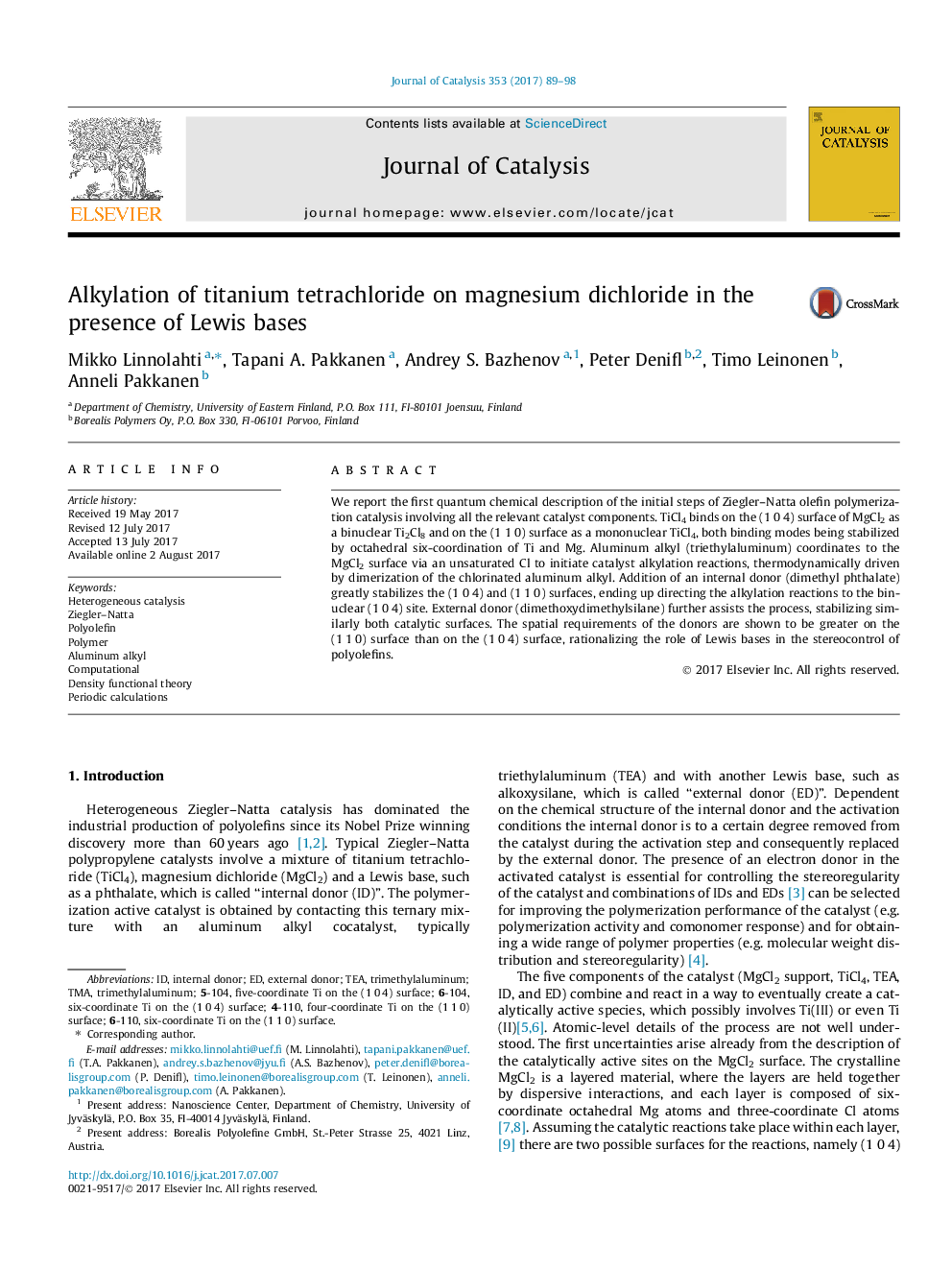| Article ID | Journal | Published Year | Pages | File Type |
|---|---|---|---|---|
| 6455554 | Journal of Catalysis | 2017 | 10 Pages |
â¢All relevant catalyst components are included in the periodic calculations.â¢TiCl4 prefers octahedral coordination on both (1 0 4) and (1 1 0) catalytical surfaces.â¢Coadsorption of TiCl4 and internal donor stabilizes the (1 0 4) over the (1 1 0) surface.â¢Combined effect of internal and external donors is to stabilize the both surfaces.â¢Both (1 1 0) and (1 0 4) surfaces are relevant in catalysis.
We report the first quantum chemical description of the initial steps of Ziegler-Natta olefin polymerization catalysis involving all the relevant catalyst components. TiCl4 binds on the (1Â 0Â 4) surface of MgCl2 as a binuclear Ti2Cl8 and on the (1Â 1Â 0) surface as a mononuclear TiCl4, both binding modes being stabilized by octahedral six-coordination of Ti and Mg. Aluminum alkyl (triethylaluminum) coordinates to the MgCl2 surface via an unsaturated Cl to initiate catalyst alkylation reactions, thermodynamically driven by dimerization of the chlorinated aluminum alkyl. Addition of an internal donor (dimethyl phthalate) greatly stabilizes the (1Â 0Â 4) and (1Â 1Â 0) surfaces, ending up directing the alkylation reactions to the binuclear (1Â 0Â 4) site. External donor (dimethoxydimethylsilane) further assists the process, stabilizing similarly both catalytic surfaces. The spatial requirements of the donors are shown to be greater on the (1Â 1Â 0) surface than on the (1Â 0Â 4) surface, rationalizing the role of Lewis bases in the stereocontrol of polyolefins.
Graphical abstractDownload high-res image (182KB)Download full-size image
